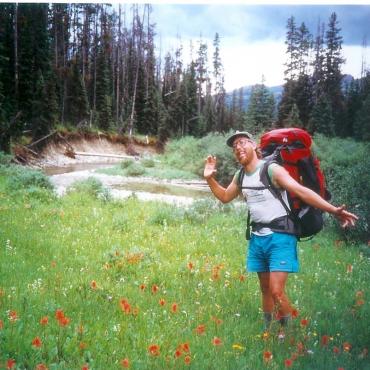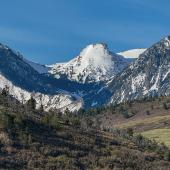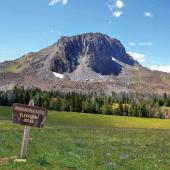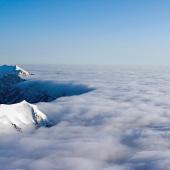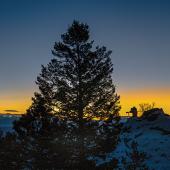The Road Not Taken
Joe Gutkoski knows the Gallatin Range as well as anyone. After leaving the military, he worked for the Forest Service for 32 years, including 13 as a smoke jumper. He retired from the Forest Service in 1982. Joe is also known for his mountaineering exploits, including the first ascent of the Black Spire on Mount Cowan in the Absarokas, and the first winter ascent of Hilgard Peak in the Madison Range.
Joe helped to blow the whistle on a logging road proposed for the heart of the northern Gallatin Range. It would have split the range in half with a large road system in Porcupine Creek, now well-known as roadless country and superb elk habitat. I had the opportunity to talk with Joe about this and a few other topics.
Phil Knight: Can you tell me how you helped stop a road that was planned in Porcupine and Buffalo Horn creeks in what is now the Hyalite-Porcupine-Buffalo Horn Wilderness Study Area?
Joe Gutkoski: I believe it was 1970 or a few years before. The Northern Pacific Railroad owned those sections up in Porcupine Creek and the Forest Service wanted to cost-share a road up there. The Forest Service had a lot of what they thought was timber up there, too. Northern Pacific Railroad would log it and take all the heat and then the Forest Service would come in years later and skim off the rest of it without taking any heat.
Then if you looked at the transportation plan made back in the ‘60s you could see that there was a road linkup from Tom Miner Basin down into the Buffalo Horn basin and then linking up with a road system down in Porcupine.
PK: Over Buffalo Horn Pass?
JG: Yeah, well, Tom Miner Pass was where it would cross. Of course the road was already only two miles from the top on the Tom Miner side. That area was so susceptible to land flow, and as soon as we had a series of wet years it would start flowing in there. I went on a field trip with our engineers and the Northern Pacific foresters and they had the whole centerline of the road and the bridge crossings marked. We walked that road system.
PK: It would have been a pretty long road in there on the west side?
JG: Oh yeah. It would have gone into every one of those Northern Pacific sections. After walking the centerline with the engineers, I became alarmed and started bringing out the obvious things about land flow and soils and so forth. I also brought in a soils man from the Beaverhead (somebody from outside the organization is a little bit more believable, you know) and, why, we got that road killed off. The plan then was to helicopter log it. That fizzled because of the economy. Since then, the private sections in Porcupine and Buffalo Horn were one of the first purchases with federal Land and Water Conservation Fund money.

